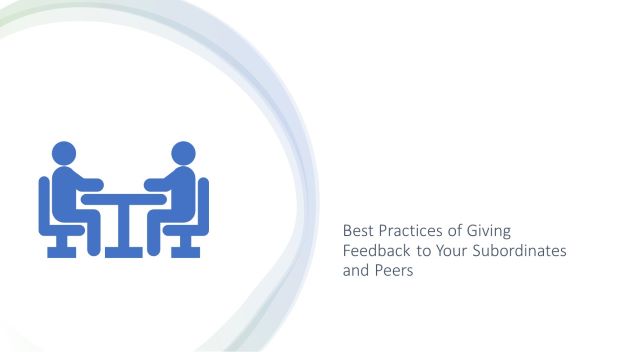In this post, I shall touch upon Best Practices of Giving Feedback to Your Subordinates and Peers. I’ve a separate post on Best Practices of Giving Feedback to Your Seniors and Top Management.
There are certain best practices when giving feedback to your subordinates and peers. These include being constructive and encouraging, explaining the impact of your feedback, and personalizing the feedback. In addition, you should also be sure not to bring up a sensitive subject. Rather, you should be respectful and courteous.
Positive feedback
Providing positive feedback to your employees is important for their development. This feedback should be specific to the employee's effort, not general. It should also be delivered in a way that does not create confusion or lose meaning. Positive feedback is a powerful tool for motivating employees and fostering a growth mindset.
Giving positive feedback is easy, but it should be sincere and meaningful. It should reinforce positive behaviors and should be given in the moment. Giving praise too late can leave employees feeling unappreciated.
Constructive criticism
Giving constructive criticism can be difficult. It engages the fight-or-flight response in a person. However, this type of feedback can also help improve performance. The key is to listen to the other person without responding and to keep an open mind when giving feedback.
When giving feedback, make sure to keep the tone positive and respectful. Peers are more receptive to feedback that is given in a constructive manner. Keep in mind that the purpose of providing feedback is to help solve a problem, not to offend someone. It's also important to be specific, instead of skirting the issue or trying to explain why something is a problem. Give examples of what you think needs to change and provide solutions if possible.
Explaining impact of behavior
Giving feedback to subordinates and peers can have significant benefits for the person receiving it. It can help improve the quality of the work, influence the trajectory of a person's career, and even increase job satisfaction. Conversely, withholding feedback can make people resentful or frustrated.
Giving timely and meaningful feedback is critical to the employee experience. It builds trusting relationships, fosters a better team, and creates a more humane company culture. Giving feedback takes time and energy, but it can be incredibly valuable. It also shows that you are invested in the person's progress.
Personalizing feedback
While giving feedback to subordinates and peers, it is important not to personalize it. Giving feedback that is too personal will lead to clouded thinking and will encourage the receiver to blame themselves instead of the situation. This can lead to the fundamental attribution error, wherein we incorrectly blame ourselves for the behavior of others.
The best way to personalize feedback is to put it in context. It can be as simple as introducing negative feedback before a positive one. It also eliminates any potential for embarrassment.
Follow Shruti on Twitter, Facebook, YouTube, LinkedIn
Categories: HR Development | Leadership
Keywords and Tags:
#givingfeedback #feedbacktopeers #feedbacktosubordinates #personalizefeedback #constructivefeedback





















